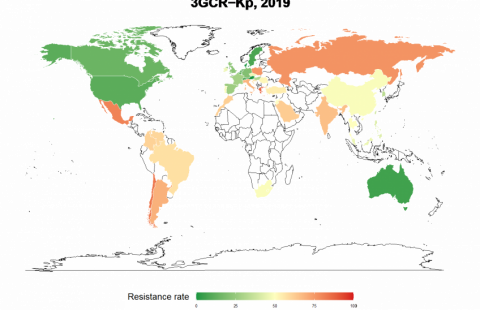Exposure to common air pollutants and traffic during pregnancy significantly increases the risk of restricted fetal growth, even at levels well below those stipulated in current European Union (EU) air-quality directives, according to one of the largest cohort studies of its kind published in The Lancet Respiratory Medicine.
The researchers estimate that for every increase of 5 micrograms per cubic meter (5µg/m³) in exposure to fine particulate matter during pregnancy, found in for example traffic fumes and industrial air pollutants, the risk of low birthweight at term rises by 18%. Importantly, this increased risk persists at levels below the existing EU annual air quality limit of 25µg/m³.
« Lower birthweight babies is associated with health hazards during childhood and adult » explain Rémy Slama, Inserm research director and lead author of the study.“Our findings suggest that a substantial proportion of cases of low birthweight at term could be prevented in Europe if urban air pollution, particularly fine particulate matter, was reduced”*, explains Dr Marie Pedersen from the Centre for Research in Environmental Epidemiology in Barcelona, Spain.
Pedersen was part of a team of European researchers coordinated by CREAL (Barcelona) and INSERM (Grenoble) to assess the impact of exposure to low levels of air pollution during pregnancy on low birthweight at term (<2500g, after 37 weeks of gestation) which has been linked with respiratory problems in childhood, as well as other diseases later in life. The study also looked at the impact on head circumference because of the potential effect on neurodevelopment. Using data from the European Study of Cohorts for Air Pollution Effects (ESCAPE), the investigators pooled data from 14 cohort studies in 12 European countries involving over 74 000 women who had singleton babies between Feb, 1994 and June, 2011. Air pollution concentrations of nitrogen oxides and particulate matter were estimated at the home addresses using land-use regression models. Traffic density on the nearest road and total traffic load on all major roads within 100m of the residence were also recorded. All air pollutants, particularly fine particulate matter (PM 2.5; with a diameter of 2.5 micrometers or less), and traffic density increased the risk of term low birthweight and reduced average head circumference at birth, after accounting for other factors like maternal smoking, age, weight, and education. Average exposure levels of PM2.5 during pregnancy in the study population ranged from less than 10μg/m³ to nearly 30μg/m³. The researchers estimated that if levels of PM 2.5 were reduced to 10µg/m³ (the WHO annual average air quality guideline value), 22% of cases of low birthweight among term deliveries could be prevented. According to co-author Professor John Wright, director of the Bradford Institute for Health Research in the UK, “The widespread exposure of pregnant women worldwide to urban ambient air pollution at similar or even higher concentrations than those assessed in our study provides a clear message to policy makers to improve the quality of the air we all share.”

